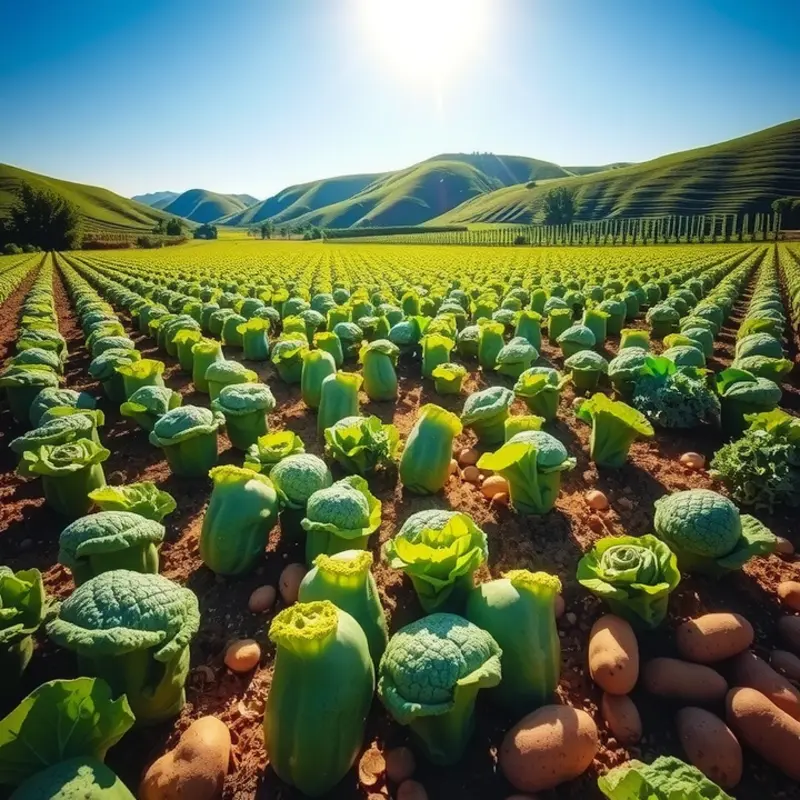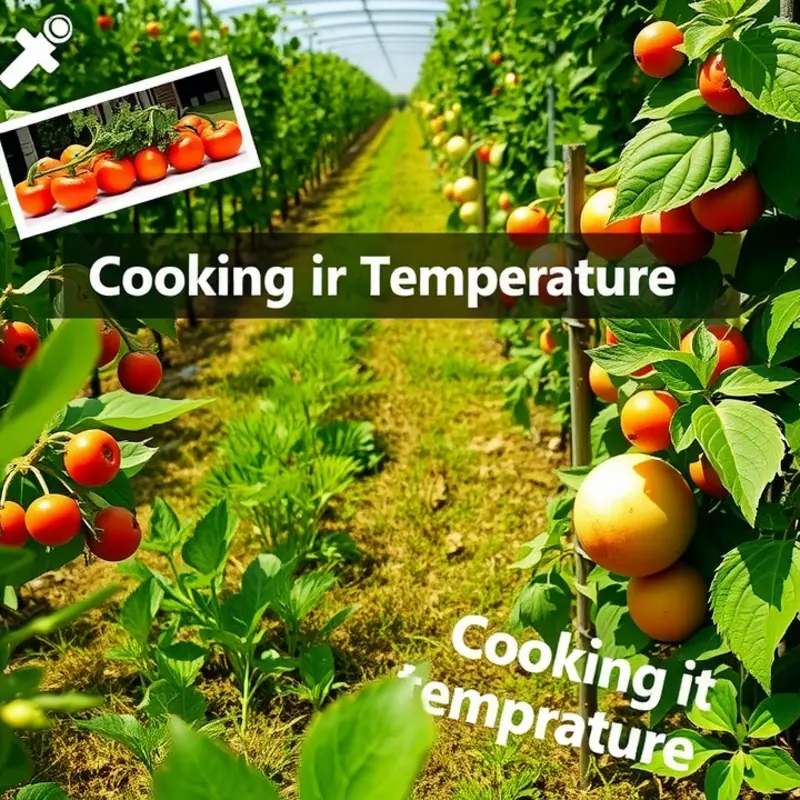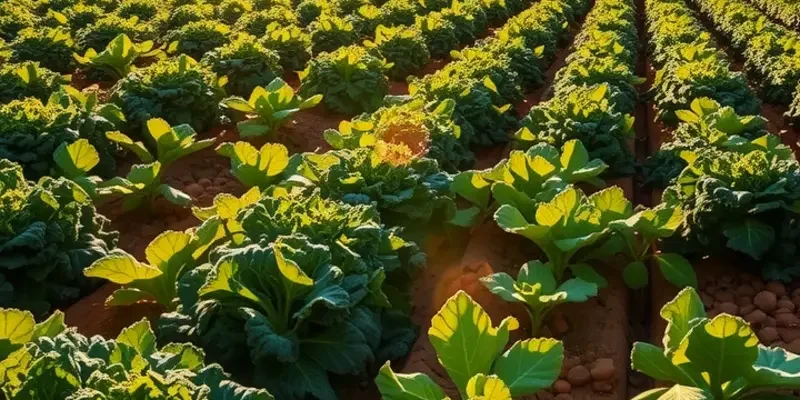Cooking potatoes evenly can be a challenge for many home cooks. Whether you’re roasting, boiling, or baking, the key to achieving that perfect texture lies in preparation and technique. In this guide, you’ll discover practical tips that cater to all skill levels, ensuring your potatoes are consistently delicious and perfectly cooked. Let’s dive into the methods that will elevate your potato dish to new heights.
The Science of Cutting: Uniform Pieces for Uniform Cooking

Achieving potato perfection begins long before you start cooking. A critical first step is cutting potatoes into uniform pieces. This approach ensures every piece cooks at the same rate, preventing some parts from becoming overcooked while others remain undercooked. Scientifically, uniformity in size allows heat to penetrate equally through each piece, leading to consistently cooked potatoes.
When potatoes are cut uniformly, their surface area-to-volume ratio is more balanced across each piece. This ratio plays a significant role in cooking because it determines how quickly heat reaches the center of each potato piece. Smaller pieces or irregular cuts may cook too fast, leading to mushy textures before larger ones are done.
Cutting Techniques
Mastering different cutting techniques can make all the difference. Dicing involves cutting potatoes into small cubes, which works well for soups and stews. Each piece should ideally measure about half an inch to ensure they cook quickly and evenly. For roasting, try cubing potatoes into one-inch pieces. The larger size promotes a crispy exterior while keeping the interior nicely soft.
Julienning cuts your potatoes into long, thin sticks and is ideal for frying, particularly for homemade fries. The uniformity here not only aids in even cooking but also results in a consistent texture and flavor profile.
Wedges are another popular cut, often used for oven-roasted potatoes. Each potato is typically cut into eighths, maintaining a manageable size for even cooking. Achieving a consistent thickness is vital here because differences can lead to uneven texture and browning during the roasting process.
Impact on Cooking Time
The size and shape of potato pieces directly impact cooking time. Smaller cuts such as julienne or dice will cook faster due to greater surface area exposure, while larger cuts like wedges will take longer but offer a different textural appeal. This balance is crucial when planning meal timing.
Consider combining these techniques for recipes requiring varied textures. For example, using both wedges and cubes in a baked dish can create a dynamic eating experience while still maintaining even cooking. However, ensure each type of cut is cooked separately if possible, as they will have different cook times.
For those interested in minimizing food waste while preparing meals, check out tips on maximizing ingredient utilization by visiting practical ingredient batching.
Consistency in cutting not only ensures even cooking but enhances the overall culinary experience. Whether it’s for achieving the perfect crisp or maintaining a fluffy interior, mastering the art of cutting will elevate your potato dishes to new heights.
Temperature Matters: The Right Cooking Method for Every Recipe

Potatoes are a kitchen staple, but achieving even cooking can be tricky. Different potato types call for varied cooking temperatures and methods to ensure perfect results. Let’s delve into how temperature can make or break your potato dishes.
Choosing the Right Potato and Method
Before you start, knowing your potato type is crucial. Waxy potatoes, like red or new potatoes, tend to hold their shape well and are often ideal for boiling or steaming. These methods utilize lower, consistent temperatures that coax out the natural flavors while keeping the structure intact.
In contrast, starchy potatoes, such as the Russet, are perfect for baking or roasting. High-temperature methods allow these potatoes to develop a crispy exterior while remaining fluffy inside. The heat draws out moisture, concentrating their flavor and enhancing texture.
Mastering the Cooking Temperatures
For boiling, maintain a gentle simmer between 185°F to 200°F. This range ensures that waxy potatoes cook through evenly without breaking down into a mushy consistency. Turn to steaming at similar temperatures for an even gentler touch, preserving vitamins and minerals within the potatoes.
Roasting starchy potatoes requires higher heat, typically around 425°F. This high temperature crisps the surface while a moist interior develops, creating the perfect contrast. Baking, which also suits starchy types, is best at 400°F. The steady heat allows the potatoes to cook evenly, creating a fluffy inside without the risk of sogginess.
Using the Right Tools
Consistency in temperature is key, and a kitchen thermometer can be invaluable. When roasting, an oven thermometer ensures your oven maintains the expected heat. Also, consider using a lid for boiling to sustain even cooking, reducing temperature fluctuations that can occur on a stovetop.
Adapting to Even Cooking
Be mindful of how you’re cutting potatoes. Smaller, evenly-sized pieces will cook more consistently, reducing the risk of uneven doneness. Waxy potatoes should be cubed or sliced uniformly for boiling, while starchy ones benefit from being roasted in larger chunks, allowing heat to penetrate deeply.
For a deeper dive into preserving the nutritional integrity of your culinary efforts, consider exploring eco-smart kitchen storage. This resource offers holistic approaches to maintaining both quality and sustainability in food preparation.
Mastering the relationship between temperature and potato type results in perfect cooking every time. With these insights, you’re one step closer to potato perfection.
Final words
Achieving perfectly cooked potatoes comes down to a few simple yet effective techniques. By cutting your potatoes into uniform sizes and selecting the right cooking method for their type, you’ll enhance their flavor and texture. Experiment with different varieties and methods to discover your favorites. Remember, with a little practice and these tips, you’ll transform your potato dishes into household favorites, satisfying everyone at your table.







